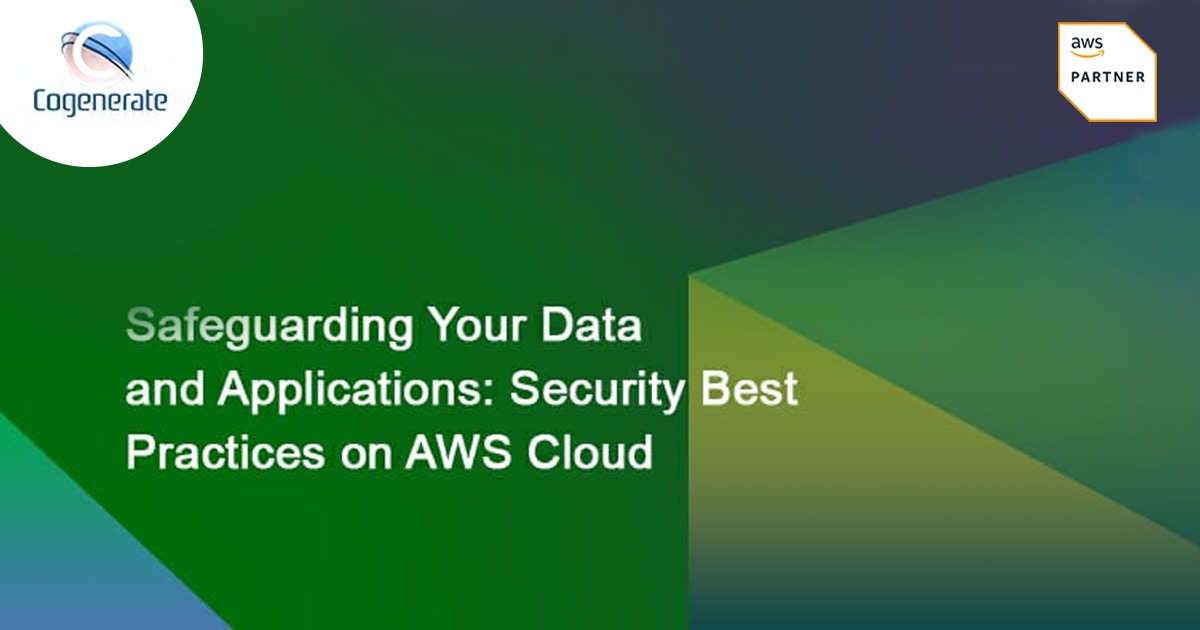
Safeguarding Your Data and Applications: Security Best Practices on AWS Cloud
Introduction:
In an increasingly digital world, data and application security have become paramount for businesses. As organizations migrate their infrastructure to the cloud, ensuring the protection of sensitive information and critical applications is of utmost importance. Amazon Web Services (AWS) provides a robust suite of security services and features designed to safeguard your data and applications. In this blog, we will explore some best practices for securing your data and applications on the AWS Cloud, helping you maintain a secure and compliant environment.
Identity and Access Management (IAM):
IAM is the foundation of security on AWS. Implementing a robust IAM strategy allows you to control access to AWS resources and maintain fine-grained permissions. Follow the principle of least privilege, granting users and services only the necessary permissions required to perform their tasks. Utilize IAM features such as multi-factor authentication (MFA), password policies, and user activity logging to enhance the security of your AWS accounts.
Secure Network Architecture:
Building a secure network architecture is crucial for protecting your data and applications on AWS. Leverage Virtual Private Cloud (VPC) to establish isolated network environments, subnets, and security groups. Implement network access control lists (ACLs) and firewall rules to control inbound and outbound traffic. Additionally, AWS offers services like AWS PrivateLink, which enables secure and private communication between VPCs and AWS services without traversing the public internet.
Data Encryption:
Encrypting data at rest and in transit is a fundamental security measure. AWS offers various encryption services to protect your data. For data at rest, you can utilize AWS Key Management Service (KMS) to manage encryption keys and encrypt data stored in Amazon S3, Amazon EBS, or Amazon RDS. For data in transit, use Transport Layer Security (TLS) for secure communication between services. AWS Certificate Manager (ACM) simplifies the process of obtaining and managing SSL/TLS certificates.
Security Monitoring and Logging:
Implementing robust monitoring and logging mechanisms allows you to detect and respond to security incidents promptly. AWS CloudTrail provides a detailed audit trail of API calls and activities within your AWS environment. Enable CloudTrail logging and configure log file integrity validation to ensure the integrity of your logs. Additionally, AWS CloudWatch allows you to monitor and set alarms on various metrics, enabling proactive monitoring of your resources and applications.
Threat Detection and Intrusion Prevention:
Protecting your data and applications from potential threats requires a proactive approach. AWS offers services like Amazon GuardDuty, which uses machine learning and AI to analyze logs and detect potential threats. GuardDuty can identify anomalies, suspicious activities, and unauthorized access attempts, providing you with real-time alerts and actionable insights. By leveraging GuardDuty, you can detect and respond to security incidents more effectively.
Regular Patching and Vulnerability Management:
Maintaining up-to-date software and promptly applying security patches is vital to address vulnerabilities and protect against known threats. AWS provides managed services like Amazon RDS, Amazon Elastic Beanstalk, and AWS Elastic Beanstalk, which handle infrastructure management and automatically apply patches. For other instances and applications, develop a patch management strategy and leverage tools like AWS Systems Manager Patch Manager to simplify the process.
Disaster Recovery and Backup:
Having a robust disaster recovery and backup strategy ensures the availability and integrity of your data and applications. AWS offers services like AWS Backup and AWS Disaster Recovery to automate and streamline the backup and recovery process. Regularly perform backups, test your recovery procedures, and establish recovery time objectives (RTOs) and recovery point objectives (RPOs) to meet your business requirements.
Safeguarding your data and applications on AWS cloud is of utmost importance in today's threat landscape and it's a shared responsibility between AWS and your organization.By implementing these security best practices, you can strengthen your defenses, protect sensitive information, and ensure the integrity and availability of your data and applications. Remember to stay informed about the latest AWS security updates and continuously evaluate and enhance your security measures to stay one step ahead of cyber threats. With a proactive approach to security, you can confidently leverage the power of AWS while keeping your data and applications secure.
